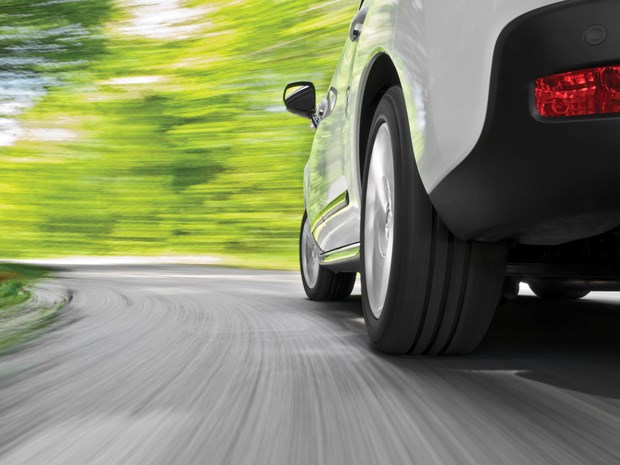There are a lot of questions being asked about the autonomous car these days, though most of them seem to have skewed to the "when?" rather than the "how?"
The fact is, almost all the technology is in existence already, out there in the real world getting results. Autonomous racecars are lapping tracks just as fast as human drivers. Google's autonomous Lexuses are racking up the miles almost entirely without incident. The self-driving car is almost here.
Except that it's not. Not quite yet anyway. While Google and others seem to be right on the cusp of providing us with a car that does all the driving itself, there's a considerable legal quagmire to be navigated. It's not the logistics, it's the litigation; people love to sue over accidents, and when there's the deep, deep pockets of a car company in the crosshairs, you can practically see the prosecutors salivating. None of the automakers want to be first to make a misstep, so in the mean time they're rolling out their technology comprehensively, but cautiously.
That strategy means a whole raft of semi-autonomous driving features that are already in showrooms, available right down to entry-level compact cars. Think the only way you can get into a machine that'll at least help you keep one electronic eye on the road is by shelling out for a heavily optioned Tesla? Guess again, this is the sort of stuff you can get on a Honda.
However, that means a whole host of new terms and tech nologies for customers to familiarize themselves with. It's not just transmission types and airbag counts anymore, today's car shopper needs to be up on their semi-autonomous driving features. Here's a quick guide as to what to look for if you're in the market.
Automatic cruise control
One of the earliest semi-autonomous features, speed-matching cruise control grew almost as a byproduct of the auto industry trying to make a car that would stop auto matically. The concept is simple: using a forward-looking radar or laser to judge distance, automated cruise control adjusts your speed to match the car in front.
Usually, the driver sets the desired speed, and the car then slows down when it detects traffic ahead. Once the traffic clears (for instance, a slow-moving vehicle pulling into the slow lane) the car then accelerates until it reaches the driver- set speed again. On long road trips, this can be a real boon, keeping you from constantly fiddling with the cruise control.
However, not all systems are created equal. Perhaps the best and smoothest in operation is that found in Mercedes equipped with their driver assistance packages. Here, there's a combination of laser and radar used, and the programming actually looks underneath the caryou're following to seeif the car ahead is slowing. This helps the system anticipate traffic flow and takes the jerkiness out of its operation,just the way a good chauffeur would.
Automated emergency braking
Hyundai showed off their available auto-braking technol ogy with a big budget Super Bowlspot featuring two worn en driving through a town filled with dopplegangers of Vancouver native Ryan Reynolds. Understandably distracted, the two ladies rubbernecked their way into nearly running over a Reynolds-clone at a crosswalk. Happily, the car was paying attention and slammed on the brakes.
If you're regularly a pedestrian (and all of us have to get out of our cars at some point), this is probably the most important safety development for the car next to the three-point seatbelt. Vehicle-pedestrian collisions are on the rise, perhaps due to both distracted drivers and pedestrians alike, and when the two come together, the results are usually disastrous.
However, multiple carmakers now offer a camera or radar- based system that can detect pedestrians ahead and take action when the driver does not. Right now, because of cost- conscious customers, automatic emergency braking is usually bundled with other technology features, like navigation or a higher-end stereo. But just as the backup camera is becoming a mandated feature, we could see pedestrian detection becom ing a standard feature on at least mid-grade models.
Lane keeping assist
Several manufacturers offer lane-departure warning sys tems that buzz the seat or beep when you wander over the yellow line. At the very least, these re-direct the driver's atten tion back where it should be: on the road. At the worst, they embarrass you in front of your passengers (and rightly so).
Lane-keeping assist is a little different. With Honda, for instance, the car will actually detect the lane markings and hold position in between them, navigating through corners at speed. Like most manufacturers, you can only take your hands off the wheel briefly, as the car will demand steering input after just a few seconds.
And even with more advanced systems, there can be glitches. If sand or leaves are obscuring a lane marking, the system might not read it. Sometimes paint can get too faded for a camera, where a human driver might pick up on it.
However, this technology, combined with the abilities of matching speed to traffic ahead and performing an emer gency panic stop if needed show just how close we are to the
Brendan McAleer is a freelance writer and automotive enthusi ast. His column appears Fridays in the North Shore News auto section called Today's Drive. He can be reached via email at [email protected].



